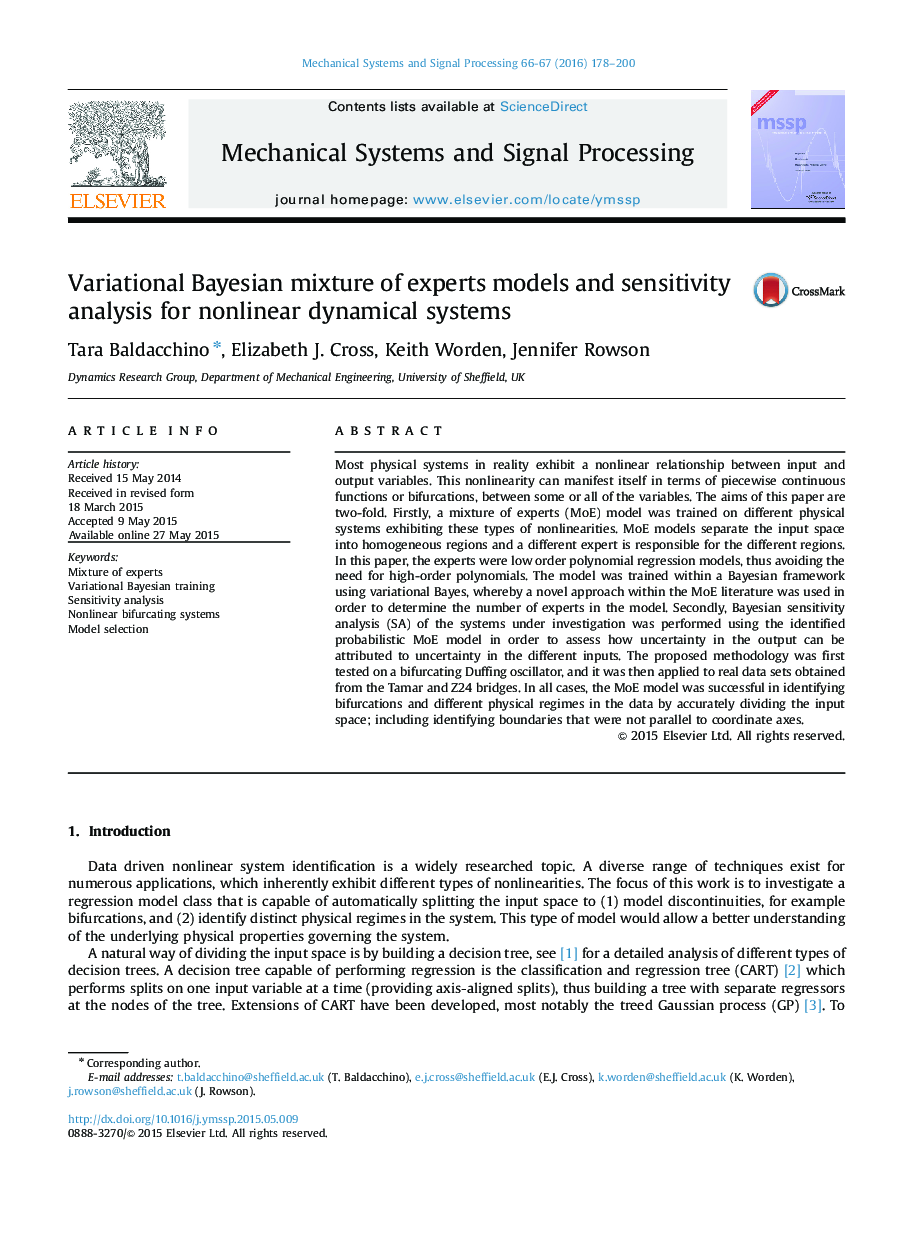| کد مقاله | کد نشریه | سال انتشار | مقاله انگلیسی | نسخه تمام متن |
|---|---|---|---|---|
| 559124 | 1451861 | 2016 | 23 صفحه PDF | دانلود رایگان |
• Bifurcating and piecewise continuous data analysed.
• A mixture of experts model used to identify splits in data.
• Probabilistic splits on multiple inputs can be accommodated by the model.
• Bayesian training of the model via variational Bayes.
• Bayesian sensitivity analysis relating uncertainty in inputs to uncertainty in output.
Most physical systems in reality exhibit a nonlinear relationship between input and output variables. This nonlinearity can manifest itself in terms of piecewise continuous functions or bifurcations, between some or all of the variables. The aims of this paper are two-fold. Firstly, a mixture of experts (MoE) model was trained on different physical systems exhibiting these types of nonlinearities. MoE models separate the input space into homogeneous regions and a different expert is responsible for the different regions. In this paper, the experts were low order polynomial regression models, thus avoiding the need for high-order polynomials. The model was trained within a Bayesian framework using variational Bayes, whereby a novel approach within the MoE literature was used in order to determine the number of experts in the model. Secondly, Bayesian sensitivity analysis (SA) of the systems under investigation was performed using the identified probabilistic MoE model in order to assess how uncertainty in the output can be attributed to uncertainty in the different inputs. The proposed methodology was first tested on a bifurcating Duffing oscillator, and it was then applied to real data sets obtained from the Tamar and Z24 bridges. In all cases, the MoE model was successful in identifying bifurcations and different physical regimes in the data by accurately dividing the input space; including identifying boundaries that were not parallel to coordinate axes.
Journal: Mechanical Systems and Signal Processing - Volumes 66–67, January 2016, Pages 178–200
